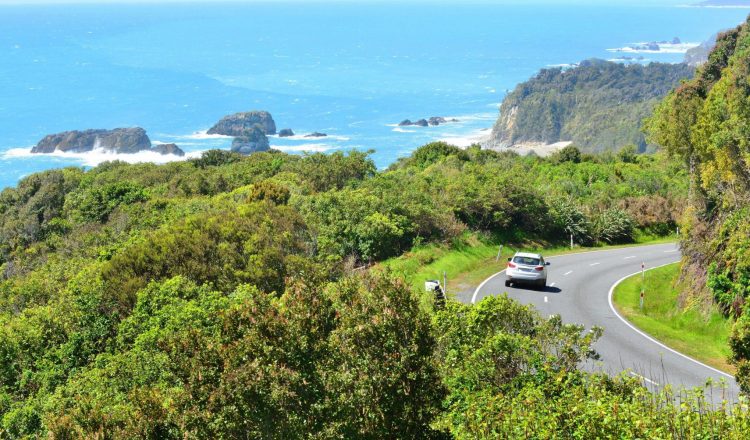休日の運転
交通量の増加、渋滞、疲労、慣れない環境での運転などの理由から、休暇中の移動には特に注意が必要です。 このような時期に運転する際には、礼儀正しく、他の人と道路を共有することを忘れず、こまめに休憩を取ることで、冷静さを保つことができます。
なぜ警戒が必要なのか
- 道路を走る車の数が増えています。車の数が増えれば、それだけ事故のリスクも高まります。
- 多くの人が慣れない道を運転しています。
- 早朝や深夜など、長時間の運転で疲労している人が多いことでしょう。
- 暑さ、交通渋滞、騒がしい子供、一般的な疲労などの要因によるストレスの増加。
- 休暇中の人は、スピード違反、疲れているときの運転、シートベルトの不着用など、交通安全に対する注意力が低下している可能性があります。
- 休日には飲酒運転が多くなります。
安全性を高めるためにできること
休暇中の旅の安全性を高めるためには、さまざまな方法があります。道路の利用には十分な注意と配慮が必要です。
事前に計画を立てる
- 旅行を始める前に、自分と車の安全性を確認するために少し時間をかけましょう。
- 多くの高速道路が渋滞する最悪のピーク時を避けて旅行を計画してください。
- 時間に余裕を持ち、旅を休日の一部にしましょう。
- 定期的に休憩を取るようにしましょう。
変更に注意する
休日には、混雑を緩和し、車線の端で合流してさらなる遅延を防ぐために、追い越し車線が閉鎖されることがよくあります。時には別のルートが提案されることもあります。
状況に合わせた運転
「状況」とは、単に天候のことだけではありません。以下のことも含まれます。
- 走っている道路
- 交通状況
- 速度(制限速度と「安全な速度」は異なる場合があります)。
- 疲れていないか、運転に影響する薬を飲んでいないかなど、あなた自身のこと
- あなたの車と荷物
疲労に注意
長時間の移動は疲れますし、運転中の疲労は命取りになりかねません。昨年の交通事故による死亡者数は54人、負傷者数は1,000人近くにのぼり、ドライバーの疲労がその要因となっています。フレッシュな状態で運転できるよう、事前に十分な休息を取るよう計画してください。旅の途中でどこで休憩を取るか、あらかじめ計画しておくとよいでしょう。
最も安全なルートを見極める
あるルートは他のルートよりも安全です。樹木、溝、電柱、狭い路肩などの道路脇の危険性がリスクを高めることを知っておく必要があります。交差点は危険ですし、中央分離帯のない交通量の多い道路も危険です。このような知識があれば、状況に応じて運転を調整したり、リスクの高い田舎道では特に注意したりすることができます。
どのルートがより安全で、どのルートでより注意が必要かは、KiwiRAP(外部リンク)のウェブサイトをご覧ください。このサイトでは、地方の様々なステート・ハイウェイの安全性のリスクを、地域ごとに評価しています。
旅行の前に
- 車両の点検を受けてください。ほとんどの整備工場では、タイヤの溝や空気圧、ライト、ブレーキ、冷却システムなどの安全点検を行っています。(チューニングされた車は燃費が良いので、燃料費の節約にもなります。)
- 健康診断書と自動車免許証が最新のものであることを確認しましょう。
- 運転免許証が最新のものかどうかを確認してください。有効期限が切れていたり、期限が近い場合は、旅に出る前に更新する必要があります。
車を購入またはレンタルする際には、できるだけ安全な車を選ぶようにしましょう。Rightcar.(外部リンク)で車の比較安全性をチェックすることができます。
車に荷物を積むときは、すべてのものがしっかりと収納されていることを確認してください。小さなものでも、急停車や衝突の際には、危険なミサイルになる可能性があります。
トレーラーやキャラバンのチェック
牽引用のアタッチメントをすべてチェックし、カップリングに互換性があることを確認します。また、セーフティチェーン、トレーラーのライト、タイヤ、ブレーキも忘れずにチェックしましょう。
トレーラーを牽引している場合、公道での最高速度は時速90kmです。左側を走行し、他の車が通れる安全な場所で車を停めてください。
重いものは、すべての車軸に均等に積みましょう。
冷静に
休日のドライブは、混雑した道路、ゆっくりとした観光客、夏の息苦しい暑さ、冬の凍った路面などでイライラすることがあります。ここでは、落ち着いて運転するための簡単でシンプルな方法をご紹介します。
- 礼儀正しく、他の人が車に合流するのを待ち、車線変更や曲がる前には合図をしましょう。
- 追い越し以外は左に寄ってください。
- 自分の運転が遅い場合は、できる限り車を停めて他の人が通れるようにしましょう。
- 忍耐強く、他のドライバーの攻撃的な行動に刺激されないようにしましょう。
- トラックや牽引車は制限速度が低いことを覚えておきましょう。追い越し車線を待つか、前方の道路がはっきりと見え、安全に追い越せるだけのスペースが確保できるまで待ちましょう。
- 自転車や他の道路利用者に気を配りましょう。十分なスペースを確保してください。
- 田舎道では馬に注意してください。
シートベルトを締める
シートベルトを締めなかったために、せっかくの家族旅行が悲劇に見舞われるようなことがあってはなりません。運転者であるあなたには、15歳未満の全ての同乗者が安全ベルトまたはチャイルドシートでしっかりと拘束されていることを確認する法的責任があります。7歳以下の子供は、体格と体重に合った認可されたチャイルドシートで適切に拘束しなければなりません。
道路を共有していることを忘れずに
連休中は交通量が大幅に増加するため、他の自動車だけでなく、歩行者、自転車、大型トラック、バス、キャンピングカー、ボートやキャラバンを牽引する車などと道路を共有することになります。
常に前方の車との間に安全な車間距離を保ちましょう。これにより、前の車が急に停止した場合でも、安全に停止できる距離を確保することができます。
歩行者、自転車、オートバイの周りでは特に注意が必要です。これらの道路利用者は、あなたよりもはるかに保護されていません。夏場に観光ルートを移動する際には、特に自転車に注意してください。
自転車やオートバイを運転するときは、目立つようにして、適切な保護具を着用してください。
子供に目を光らせる
道路上の子どもたちに注意してください。若い自転車利用者や歩行者は、車の速度を判断するのが苦手なため、予測がつかないことがあります。また、子供たちはこの連休中に新しく自転車に乗ることを学ぶかもしれません。

















































